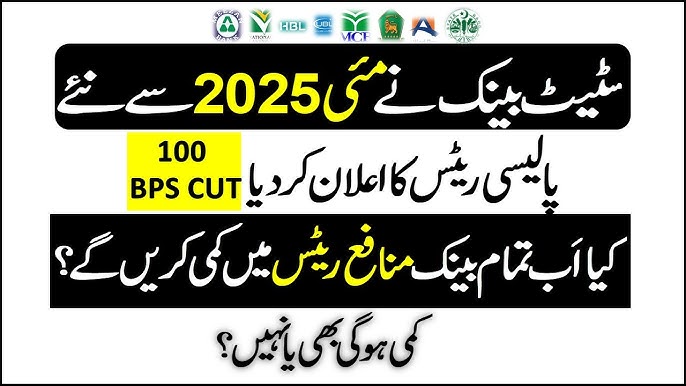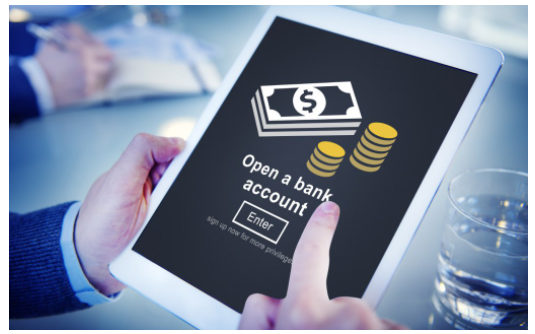Introduction
Ever wondered why your bank loan got expensive overnight or why your savings are earning more than before? That’s all because of interest rate changes. In Pakistan, interest rates are one of the most closely watched economic indicators. They influence everything—from how much you pay for your car loan to the prices of everyday goods.
Understanding the current interest rate in Pakistan helps individuals, businesses, and investors make smarter financial decisions. So, let’s dive deep into where rates stand today and what it means for you.
Current Interest Rate in Pakistan (October 2025 Update)
As of October 2025, the State Bank of Pakistan (SBP) has maintained its policy rate at 19.5%. This decision came after a series of adjustments made in response to fluctuating inflation and economic instability during 2023–2024.
Compared to last year’s peak of 22%, the rate is slightly lower — signaling cautious optimism that inflation might finally be under control.
SBP’s Monetary Policy Committee (MPC) stated that while inflation is easing, the central bank remains vigilant against potential global oil price shocks and rupee depreciation.
Key Stats (as of October 2025):
- Policy Rate: 19.5%
- Inflation (CPI): ~13.8%
- GDP Growth (Expected): 3.1%
What Determines Interest Rates in Pakistan?
Interest rates don’t change randomly — they’re shaped by a mix of economic indicators and policy decisions.
1. Inflation Rate
When inflation rises, SBP raises rates to cool down the economy. Conversely, when inflation drops, rates are cut to encourage spending and borrowing.
2. Fiscal Deficit & Government Borrowing
The government’s need to borrow money from local banks can also push rates up, as it competes for available funds.
3. Global Financial Conditions
If the US Federal Reserve or other major banks increase their rates, developing countries like Pakistan often follow suit to prevent capital outflows.
4. SBP Monetary Policy
The Monetary Policy Committee (MPC) meets every two months to review economic indicators and decide whether to hike, hold, or cut rates.
Historical Overview of Pakistan’s Interest Rate
From 2010 to 2018, Pakistan’s policy rate stayed mostly between 5%–10%, supporting economic growth.
But things changed after 2019, when inflation surged and the rupee devalued sharply. By 2022–2023, the policy rate shot up to over 20%, the highest in decades.
These hikes were necessary to meet IMF conditions and control runaway inflation caused by:
- Currency depreciation
- Soaring oil prices
- Flood-related disruptions
In 2025, we’re finally seeing a slow decline — a sign that the storm may be calming.
How the Interest Rate Affects the Economy
Interest rates are like the thermostat of the economy — too high and everything cools down; too low and things overheat.
Impact on Inflation
Raising interest rates discourages borrowing and spending, which helps reduce inflation.
Impact on Savings and Investments
Higher rates reward savers but discourage entrepreneurs. Businesses delay expansion plans due to expensive loans.
Impact on Employment
When businesses cut back, job growth slows. However, stable inflation ultimately benefits the job market in the long run.
Interest Rates and Inflation – The Balancing Act
Think of SBP as a tightrope walker balancing between inflation and growth.
If it lowers rates too soon, inflation might return. If it keeps them high too long, businesses could suffer.
That’s why the current “wait and watch” stance makes sense — SBP wants stability before making any bold moves.
Interest Rate and Banking Sector
Banks love high interest rates — they earn more from loans. But customers? Not so much.
Borrowers
Personal, car, and business loans become expensive. A loan that cost 12% in 2022 now costs nearly 20% interest annually.
Depositors
On the flip side, depositors earn more. Many banks are offering profit rates of 17–18% on term deposits.
Comparison with Other Countries
| Country | Interest Rate (Oct 2025) | Inflation Rate |
|---|---|---|
| Pakistan | 19.5% | 13.8% |
| India | 6.5% | 5.2% |
| Bangladesh | 8.0% | 8.4% |
| USA | 5.25% | 3.6% |
Pakistan’s rates are among the highest in South Asia, primarily because inflation here remains elevated.
Who Benefits and Who Suffers from High Interest Rates
Winners
- Savers: Earn more returns.
- Banks: Enjoy higher lending margins.
- Foreign Investors: Attracted by high yields.
Losers
- Borrowers: Face higher EMI payments.
- Small Businesses: Struggle to finance operations.
- Consumers: Pay more for credit-based goods.
SBP’s Monetary Policy Tools
The SBP has several levers to control liquidity and rates:
- Open Market Operations (OMO): Buying or selling government securities.
- Discount Rate: The rate at which banks borrow from SBP.
- Reserve Requirements: The cash banks must hold, influencing lending capacity.
Expected Trends for 2025–2026
Experts predict a gradual rate cut in the second half of 2026 — provided inflation stays below 10%.
IMF’s support programs and better fiscal discipline could pave the way for a policy rate of around 16–17% next year.
Tips for Consumers and Businesses
For Consumers
- Avoid unnecessary borrowing while rates are high.
- Choose fixed-rate loans if possible.
- Invest in high-yield savings accounts or government bonds.
For Businesses
- Delay expansion financed by loans.
- Optimize cash flow and reduce debt.
- Lock in interest rates before they rise again.
Impact on Real Estate and Housing Sector
When interest rates rise, home loans become expensive, slowing property demand.
Developers face financing challenges, but rental yields often increase as buying becomes less affordable for the public.
Interest Rate and Stock Market
Stock markets usually dislike higher interest rates — investors move money to safer, high-return deposits instead.
However, stable policy rates can boost investor confidence by signaling economic predictability.
Conclusion
Interest rates in Pakistan are more than just a financial number — they’re a mirror of our economy’s health.
The current 19.5% rate reflects a nation still healing from inflation shocks but showing signs of progress.
If inflation continues to cool, 2026 could finally bring relief in the form of lower borrowing costs — opening new doors for growth, jobs, and investment.
FAQs
1. What is the current interest rate in Pakistan?
As of October 2025, the policy rate is 19.5%, according to the State Bank of Pakistan.
2. Why did SBP increase the rate earlier?
To fight high inflation and stabilize the rupee during the 2023–2024 crisis.
3. How does it affect ordinary Pakistanis?
It increases loan costs but also raises profits on savings accounts.
4. What’s the forecast for next year?
Analysts expect gradual rate cuts by mid-2026 if inflation remains below 10%.
5. Should I invest or save more during high interest rates?
High-interest environments favor saving and fixed-income investments rather than borrowing or speculative spending.



